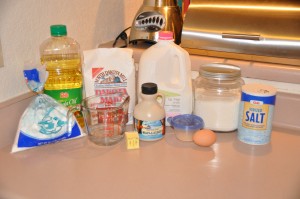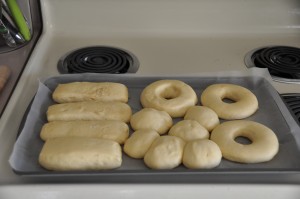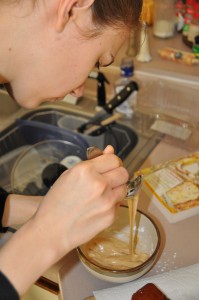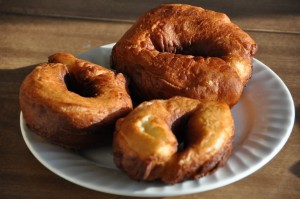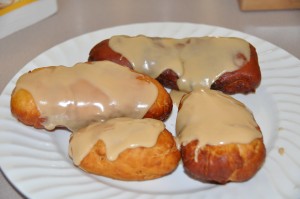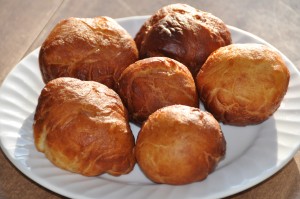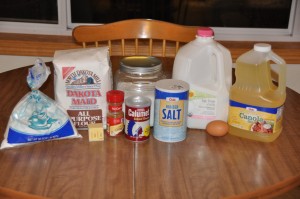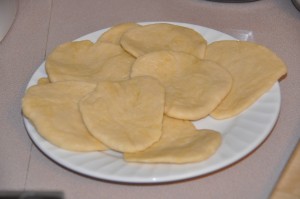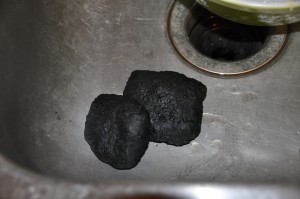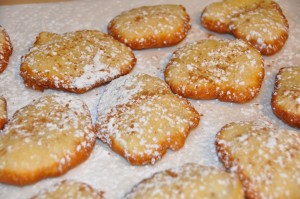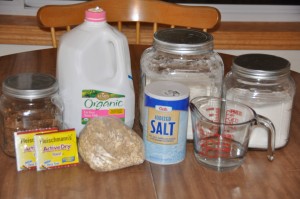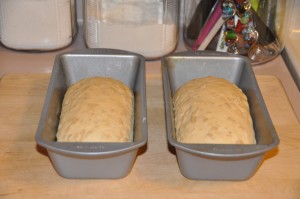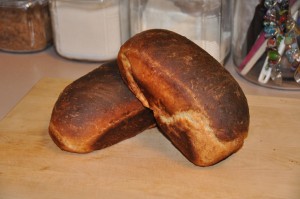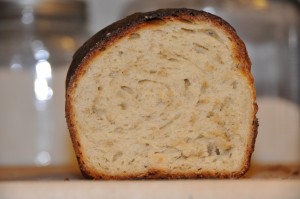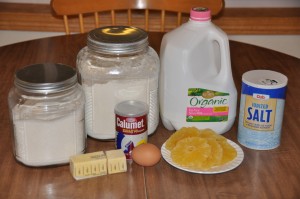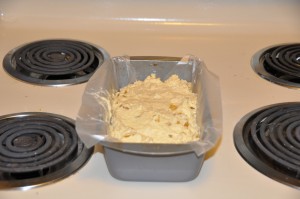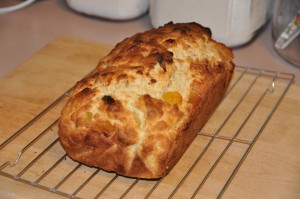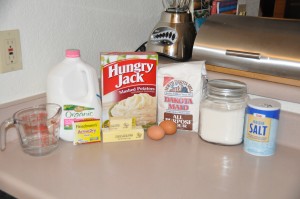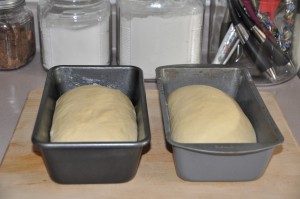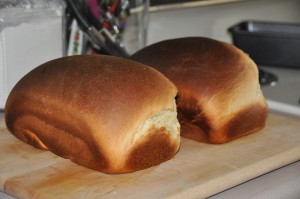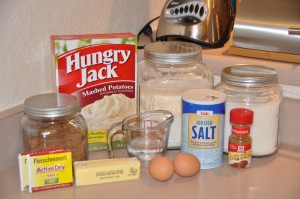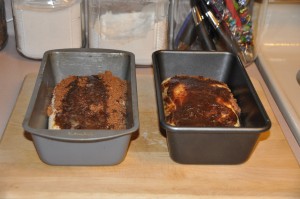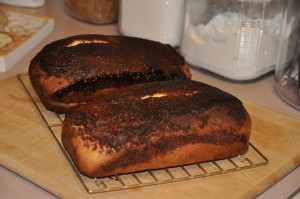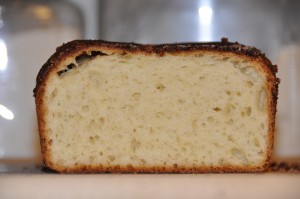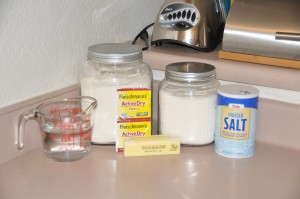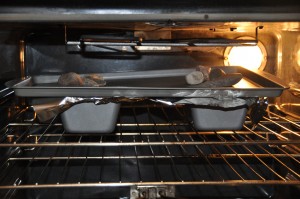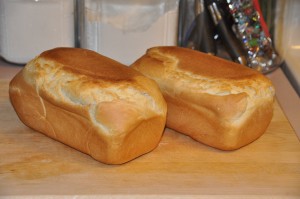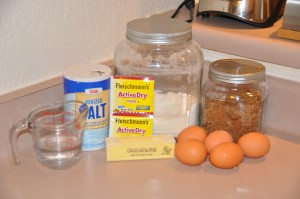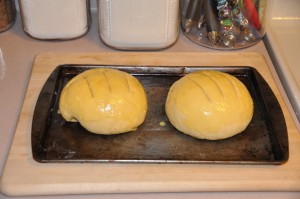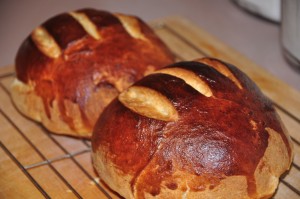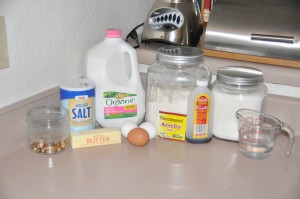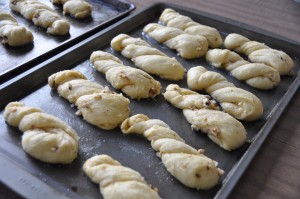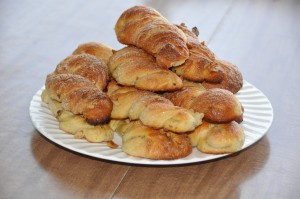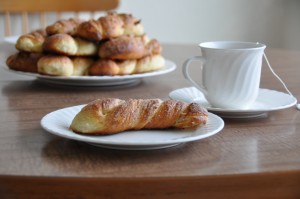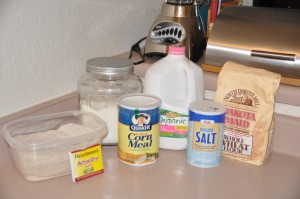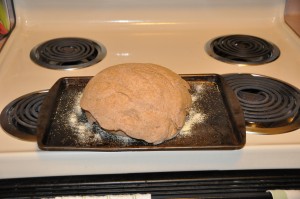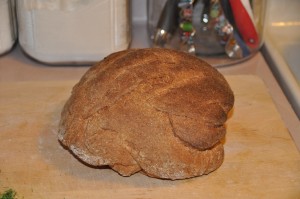“[Raised Doughnuts] are old American standards and remain hearty, delicious tidbits for breakfast or for picnics or just between meal-snacking.”
“Maple bars are one of my great weaknesses, and I must confess that even now when I go to a bakery and see those luscious rectangles of fried dough with a maple glaze on them I am tempted to indulge and often do.”
“On Nantucket there used to be, and may still be for all I know, a summer hotel where on Wednesdays, Fridays, and Sundays one could go and have dough gobs for breakfast. They were simply marvelous.”
-James Beard, Beard on Bread
Raised Doughnuts, Maple Bars, and Dough Gobs all use the same dough recipe; the only difference is the shape and the glaze in the case of Maple Bars. Since there is a limit to how much fried dough Mike and I can eat, I made one batch of dough, divided it into thirds, and used each portion for a different recipe.
Here are the ingredients:
Last night, I mixed up the dough, kneaded it lightly, and put it in the refrigerator to rise overnight.
This morning, I rolled out my dough and cut out a few doughnuts, some rectangles for the Maple Bars, and formed the rest into gobs. Then, I placed them on a cookie sheet lined with wax paper (as advised by the recipe) to rise for about an hour.
I ran into a major snag when I attempted to remove my dough from the wax paper: it was stuck. After several minutes of frustrating salvage attempts, I gave up, scraped all of the dough off, and re-formed my shapes. My advice is to skip the wax paper entirely and let the dough rise on a heavily floured board.
Heeding the lesson learned from Bunuelos, I was careful to monitor my oil temperature as I fried my various pastries. My results weren’t as aesthetically pleasing as I had hoped, but I was able to make some passable Raised Doughnuts, Maple Bars, and Dough Gobs.
While I let the pastries drain on paper towel, I mixed up half a recipe of a maple glaze using 1/2 cup of powdered sugar and about 3 tablespoons of real maple syrup.
Raised Doughnuts:
Maple Bars:
Dough Gobs:
These recipes taught me that there is a functional advantage to the hole in the center of a doughnut: it ensures that the pastry cooks evenly. Both the Maple Bars and the Dough Gobs were overdone on the outside, but still slightly doughy on the inside. Only the Raised Doughnuts cooked to perfection, inside and out. If I make doughnuts again, I would make them doughnuts shaped, but use the delicious maple glaze on top.

